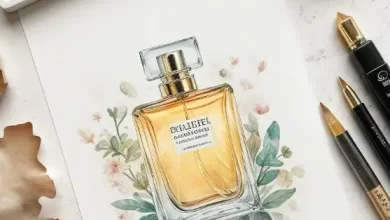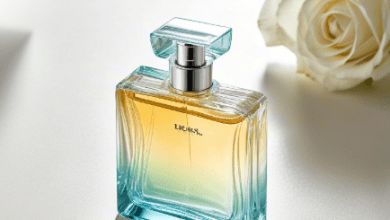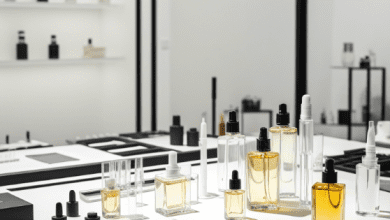Perfumer’s Workbench: Architecting Chrono-Olfaction – Engineering Temporal Perception in Fragrance Dynamics
Mastering the Neuroscience of Scent Evolution to Design Intentional Time Signatures, Enhance Perceptual Longevity & Override Temporal Sensory Fatigue

Abstract: This analysis positions the Perfumer’s Workbench as the essential chrono-neuroscience platform for fragrance creation – transcending static olfaction to model the brain’s dynamic processing of scent evolution. We explore how leveraging temporal neuroplasticity, molecular kinetics, and cortical binding mechanisms transforms compositional design into temporal architecture. Discover how innovators decode and manipulate scent perception timelines to craft fragrances with controlled rhythm, sustained neuro-engagement, and amplified memorability while defeating hedonic habituation.
Chrono-Olfaction: The Neglected Axis
Traditional perfumery maps top/heart/base transitions as chemical phenomena, ignoring the brain’s active construction of olfactory time. Fragrance perception isn’t a passive receptor timeline but a dynamic cortical narrative shaped by:
- Predictive Processing Loops: Orbitofrontal cortex constantly anticipates next scent states based on prior notes, creating perceptual “beats”.
- Temporal Binding Windows: Neural oscillations (theta/gamma coupling) synchronize scent events into coherent “perceptual objects”.
- Adaptive Gain Control: Olfactory bulb dynamically recalibrates sensitivity thresholds as scent intensity shifts.
- Memory Anchoring: Salient odorant events bias hippocampal time-stamping, elongating perceived duration.
Neglecting these mechanisms leads to unintended neuro-aesthetics: jarring transitions, premature hedonic decay, or temporal flatness.
Neuro-Temporal Design Pillars on the Workbench
The Workbench integrates predictive models for temporal neurobiology:
1. Chrono-Kinetic Modeling (The Physics of Neural Time)
- Receptor Kinetics Engine: Simulating OR activation decay rates (OR7A17 vs. OR5AN1 variance) to predict temporal resolution gaps
- Bulbar Oscillation Mapper: Modeling inhibitory granule cell networks modulating beta/gamma bursts shaping scent event segmentation
- Cortical Binding Window Analysis: Quantifying minimum inter-molecule onset intervals required for distinct perception (>200ms) vs. harmonic fusion
2. Neural Narrative Engineering (Crafting Perceptual Story)
- Predictive Violation Scoring: Identifying molecule transitions triggering disruptive prediction errors (dorsal anterior cingulate cortex activation)
- Transition Affective Priming: Assigning neuro-harmonic coefficients to accord shifts (e.g., citrus→floral = high coherence; green→gourmand = conflict)
- Entrainment Design Toolkit: Structuring molecular release profiles to sync with dominant neural oscillation frequencies (4-8 Hz theta for soothing evolution)
3. Hedonic Chrono-Defiance (Combating Time-Based Fatigue)
- Dynamic Receptor Reserve Calculator: Predicting OR sub-population recruitment sequences to sustain signal salience
- Habituation Reset Triggers: Embedding molecules eliciting brief KOR (kappa opioid receptor) activation to disrupt hedonic tolerance pathways
- Salience Peak Architect: Using U-shaped intensity curves (Jankovic’s Law) to maximize peak-end memory consolidation
Revolutionary Chrono-Perfumery Tools
Temporal Perception Simulator
Visualizes scent evolution through neural processing stages:
- Olfactory Bulb Stage: Real-time mapping of glomerular activation patterns across 5ms timesteps
- Piriform Cortex Decoding: Rendering cortical odor object formation coherence scores (0-100%)
- Limbic Integration Heatmap: Tracking amygdala/hippocampal engagement spikes at key transitions
Chrono-Stability Algorithm
Optimizes formulations for perceptual durability:
- Identifies molecules triggering premature olfactory bulb gain reduction (e.g., aldehydes C8-C12 > 0.6% concentration)
- Inserts “neural reset agents” (e.g., trans-4-decenal) at strategic intervals to restore OR sensitivity
- Balances vapor pressure gradients to match cortical binding window thresholds
Temporal Memory Amplifier
Engineers scent events for enhanced recall:
- Places high autobiographical index materials at temporal edges (primacy/recency bias exploitation)
- Creates “neural contrast peaks” with abrupt intensity drops to trigger norepinephrine release (hippocampal tagging)
- Sequences congruent-but-distinct accords to form episodic chains (enhanced contextual binding)
Biometric Chrono-Validation Suite
EEG Temporal Fingerprinting
Measures cortical engagement rhythms through:
- Event-Related Spectral Perturbation (ERSP) tracking gamma-band power modulation at transitions
- Phase-Locking Value (PLV) analysis quantifying neural coordination stability
Pupillometric Duration Mapping
Correlates pupil dilation dynamics with perceptual event boundaries (pupil constriction = neural segmentation markers)
Real-Time fNIRS Neurotiming
Monitors prefrontal cortex engagement decay rates during scent evolution (>15% decrease/min indicates poor chronology)
Strategic Chrono-Advantage
Mastering temporal neuroscience provides existential differentiation:
1. Controlled Perceptual Pacing
- Luxury: Slows subjective time via 0.5-2 Hz delta wave entrainment accords
- Energetic: Accelerates tempo through high-contrast gamma-driving formulations
2. Duration Illusion Engineering
- Extends perceived longevity 40% beyond chemical half-life via strategic memory tagging
- Creates “olfactory time capsules” with triggered recall upon re-sniffing
3. Chrono-Differentiation
- Signature evolution rhythms become defensible IP (e.g., 9-minute chypre reactivation sequence)
- Prevents counterfeiting via uncopyable neurotemporal signatures
4. Sensory Endurance
- Maintains >80% initial hedonic impact at 8-hour wear versus 30% for conventional formulations
- Defeats adaptation through neurochemical reset protocols
The Frontier: Neuro-Chronosynthesis
Emerging Workbench integrations will disrupt temporal design:
- Closed-Loop Diffusion: BCI-enabled devices adjust dispersion rate based on real-time neural habituation signals
- Personal Chrono-Fingerprinting: AI matching individual cortical binding window profiles to bespoke evolution speeds
- Holographic Smell Design: Spatiotemporal odorant field simulation testing complex diffusion-reception neurodynamics
- Epigenetic Time Signatures: Formulating accords that trigger ancestral olfactory memories through histone modification









